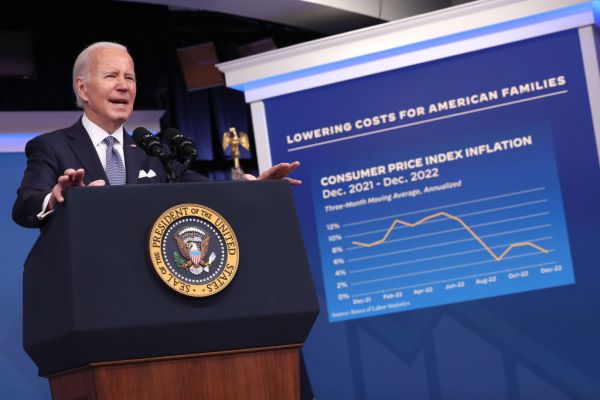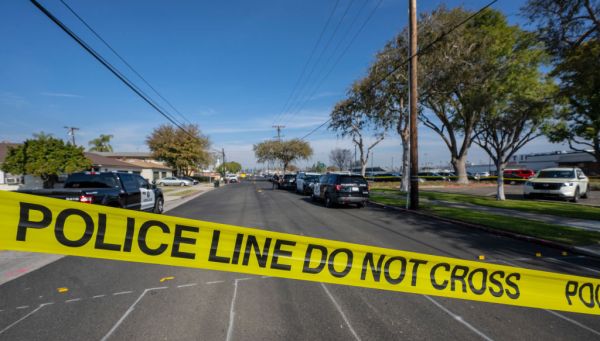We live in a moment when everyone seems compelled to talk about national trends and systemic problems. There are plenty of reasons for this.
Politicians in Washington, Republicans and Democrats alike, think Washington should call the shots. Presidents and presidential aspirants feel the need to talk about our vast country in homogenous and monolithic terms—or cut in half between the “red” and “blue” parts. State and local officials—sometimes with good reason—like to blame their problems and failures on national trends beyond their control, at least partly to pass the buck but also to get more bucks passed from Washington to them. Particularly as local news dries up, the national press corps is biased toward framing stories in national terms. Social media has made the whole country seem like one endlessly bickering small town.
And sometimes, national trends and systemic problems are exactly that—national and systemic.
Still, the truth remains that even in those cases, most national problems nonetheless manifest themselves locally and therefore lend themselves to local solutions.
Consider crime.
If you’ve been to New York City recently, you’ll have seen drugstores turned into fortresses against shoplifters, with toothpaste and deodorant under lock and key. The Big Apple is hardly alone—similar problems plague many cities where shoplifting has caused stores to “harden” against crime and, some, to simply shut down entirely. So, yes, it’s a national trend.
But the way to fix the national trend is with local responses.
In New York City last year, just 327 people accounted for nearly a third of all shoplifting arrests. As a group, they were arrested and rearrested more than 6,000 times, according to Police Commissioner Keechant Sewell. Moreover, only 18 department stores and seven chain pharmacies accounted for a fifth of all complaints.
These numbers may not be perfectly reflective of reality. Many businesses don’t even bother complaining anymore and the police don’t always bother investigating smaller incidents. And one can reasonably assume that the 327 shoplifters got away with shoplifting more often than they were caught doing it.
But generally speaking, these numbers confirm what has been known by criminologists and sociologists for decades—a very small number of people commit a very large number of crimes.
Marvin Wolfgang’s seminal study, “Crime in a Birth Cohort” of 10,000 young Philadelphia men born in 1945, found that about 6 percent of juvenile boys accounted for nearly half of all juvenile crime. A follow-up study found that 7 percent committed 61 percent of crimes. Similar findings have been found in studies across Europe. And this dynamic holds not just for juvenile or petty offenses. One Swedish study found that 1 percent of the population was responsible for 63 percent of violent crime convictions.
Crime isn’t just demographically concentrated, it’s also geographically concentrated. There’s even something called, “The Law of Crime Concentration,” which holds that roughly 5 percent of locations in a city account for half the crime. “This is not just a matter of neighborhoods,” note criminologist John McDonald and former prosecutor Thomas Hogan, “between 3 percent and 5 percent of specific addresses on city blocks generate 50 percent or more of reported crimes.”
Also, while the nature of crime doesn’t change much, the types of criminals do. Most shoplifters aren’t juveniles. Some of the spike in big city shoplifting is committed by homeless and drug-addicted people, many with mental illness, or, increasingly organized criminal shoplifting gangs that have learned how to resell goods online.
The public debate is all too often about possible abstract causes of crime—systemic racism, moral decay, too little gun control (or too much!) or some other grand political theory. But when this happens, every discrete crime gets crammed into a preexisting narrative, that leaves little room for important distinctions.
For instance, most mass shootings are gang-related in very concentrated and at least somewhat predictable areas rather than shootings at schools. Both are terrible problems, but they’re not the same problem. The recent murder of a San Francisco tech entrepreneur Bob Lee was initially pigeonholed into a familiar “San Francisco is soft on crime” narrative. I think San Francisco is doing a poor job fighting crime, but Lee was stabbed by someone he knew, not by a random mugger.
Crime is a public policy problem. It is arguably humanity’s oldest public policy problem, because the best you can do is minimize it. Ideological disagreements over how to fight crime are unavoidable. But those disagreements can only be productive when the ideologues look at the actual problems we have, not the problems they want to argue about.









Please note that we at The Dispatch hold ourselves, our work, and our commenters to a higher standard than other places on the internet. We welcome comments that foster genuine debate or discussion—including comments critical of us or our work—but responses that include ad hominem attacks on fellow Dispatch members or are intended to stoke fear and anger may be moderated.